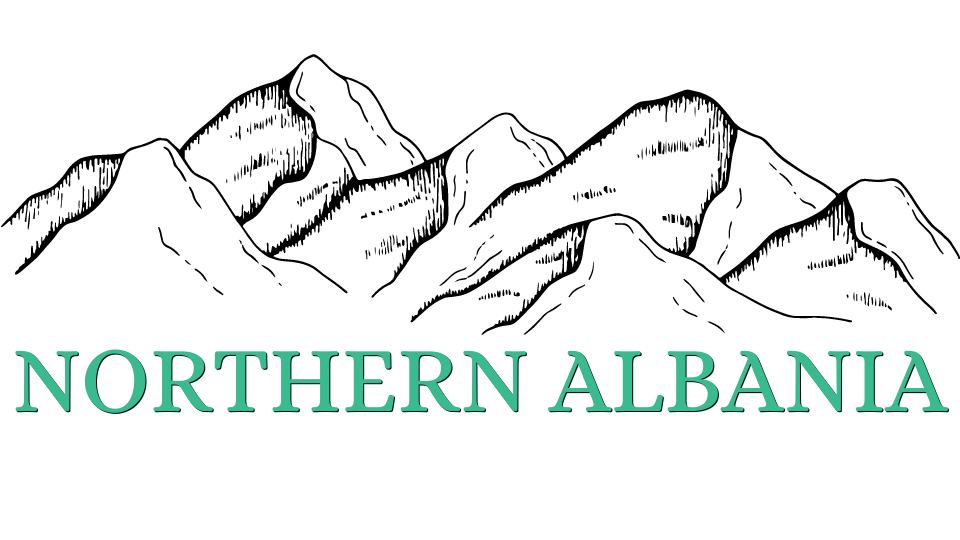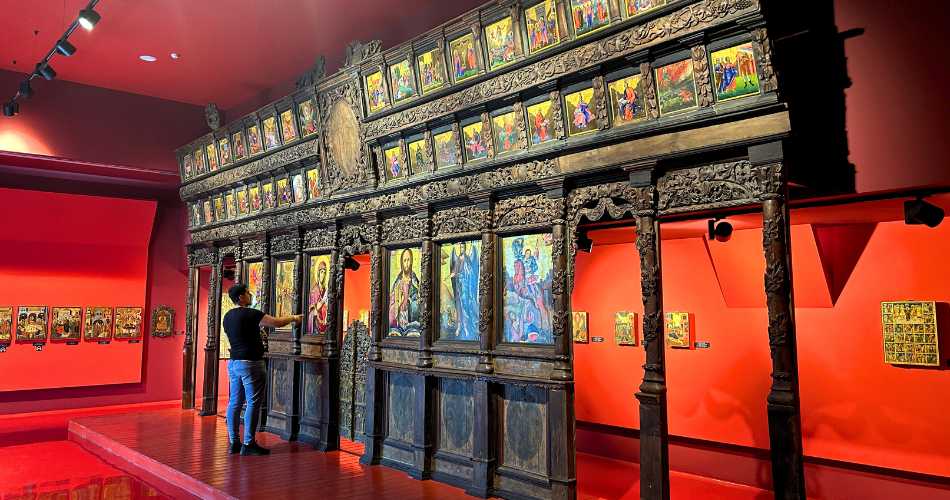Want to find the best museums in Albania?! As someone who is an avid museum lover, I wanted to write a full Albania museum guide, especially since I have visited almost all of them that I talk about.
I’ve had plenty of time to visit while living in Shkoder, and it helps that there are a lot of great museums in Albania that are in my city. There’s a reason why it’s dubbed the “Ancient city of Albania”!
But enough about that, check out my top picks for the best Albania museums in case you don’t have time to read the whole article.
Can’t Miss Museums In Albania – Top Picks
- National History Museum
- Museum of Secret Surveillance
- Gjergj Kastrioti National Museum (Skanderbeg Museum)
- Marubi National Museum of Photography
- Gjirokaster (see section for more details)
- National Museum of Medieval Art
- Archaeological Museum of Apolonia
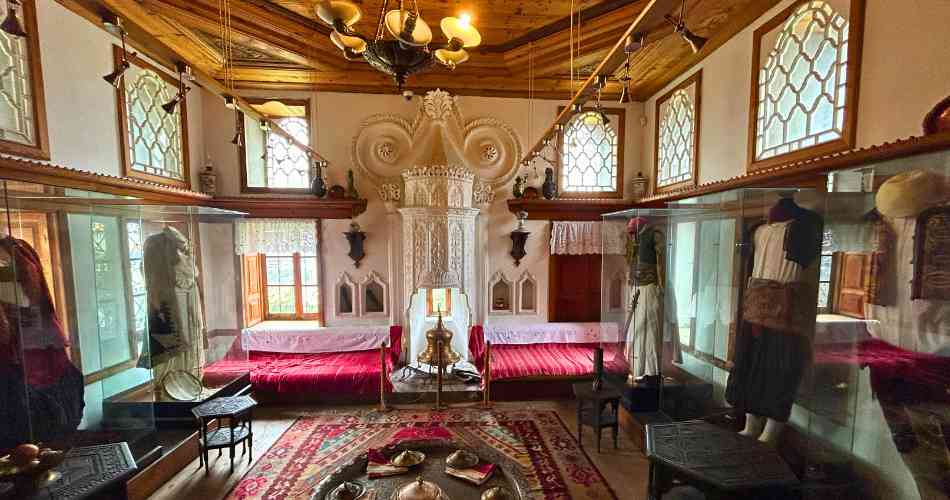
What To Know About Museums In Albania
If you know anything about this small Balkan country, you’ll know that this is Albania was shut off from the rest of the world for almost half a century. To make it more intense, this was while the rest of the world was taking off in development and technology.
In many ways, visiting Albania can still give you a glimpse into the past (in some places). Due to this lack of growth and outside influence, you might find that some things are “lacking”.
For example, some important historical parts of Albania weren’t preserved. Many things are still intact but aren’t being taken care of or there’s no information for tourists. It is slowly getting better though!

Best Museums In Tirana
So even though the whole country is chock full of layers and layers of super intriguing and important history, it’s not being shown properly. This is why I always suggest that people visit Tirana because some of the best museums in Albania are there.
And since this country has such a complicated past that still dictates how things are today, it’s good to learn from these museums in Tirana before exploring the rest of Albania.
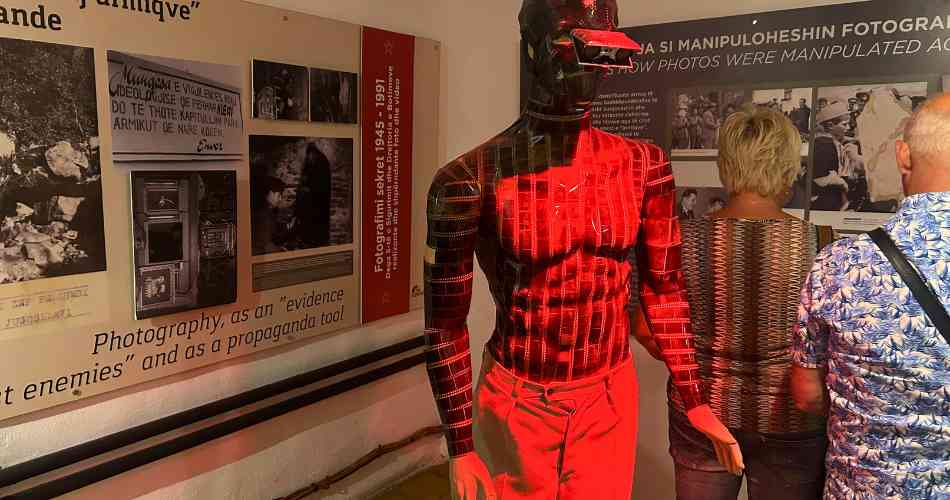
Some of the best museums in Tirana are the National History Museum, the Museum of Secret Surveillance (also known as the House of Leaves) and both Bunk Art 1 and Bunk Art 2 museums. Let me give you a brief overview so you can decide for yourself, especially if you have limited time in Albania’s capital.
Besides Bunk Art 1, all of these museums are close together so you’ll have no problem walking to each. Though the history can be a bit heavy so fitting them all in one day is up to you!
Check out the best day trips from Tirana and the best hostels in Tirana!
1. National History Museum
I don’t want to say for certain, but it seems like the National History Museum is one of the largest in Albania. There is a lot to get through – it has a huge variety of history to take in.
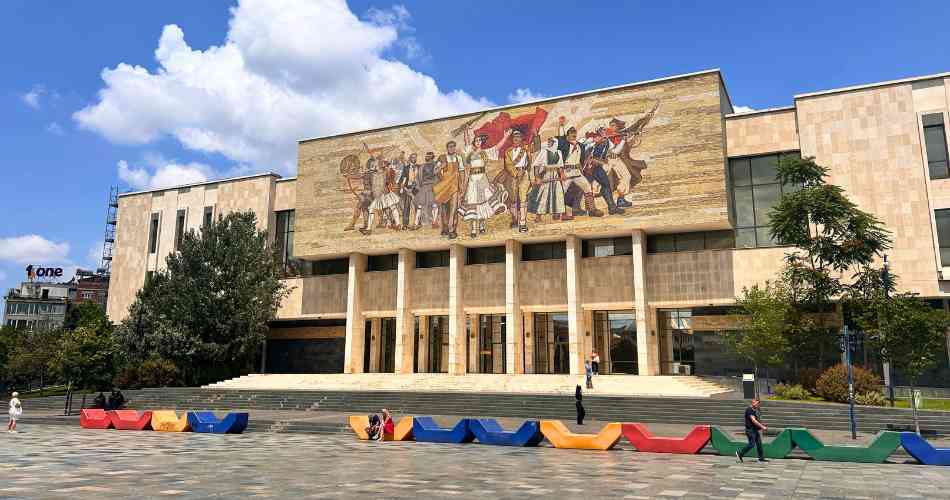
Everything from ancient up until modern day. I’d highly recommend visiting as it will give you more context about Albania, and also you get see quite a bit for the ticket price. Even on the outside, there is a gorgeous, massive mosaic mural depicting Albanian figures.
It’s located in the main square of the Tirana – Skanderbeg Square so you won’t miss it for sure when you are there.

2. Museum of Secret Surveillance
One of the times I visited, I stayed at an amazing hostel in Tirana (read my full guide) or if you want to check it directly – Vanilla Sky Hostel. The reception recommended I stop by the Museum of Secret Surveillance, also known as the House of Leaves Museum.
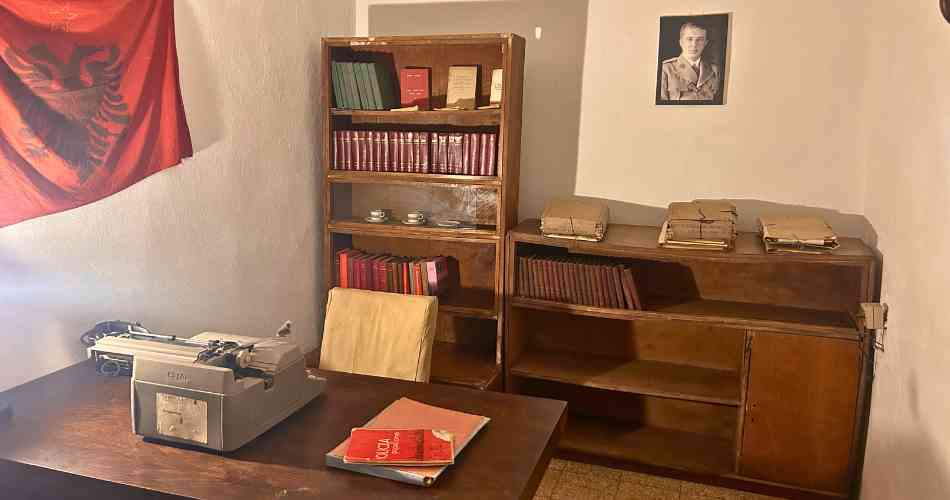
It didn’t disappoint! If you know me, you know I love museums and it makes it so much better when the museum is housed in a significant building about the history it displays. The building of the House of Leaves makes it even more interesting.
Originally, it was a maternity ward before Albania’s dictator, Enver Hoxha, turned it into his spy center for both Albanians and the very few visitors that were allowed into Albania during this time. The equipment that was used and the level of surveillance was insane – you’ll need to check it out for yourself.

3. Bunk Art 2
Right in the heart of Tirana, close to Skanderbeg Square, you can find Bunk Art 2 which is a nuclear bunker with a museum inside. Even though there are literally thousands and thousands of bunkers all over Albania, you get two for one while exploring this because there are some neat displays.
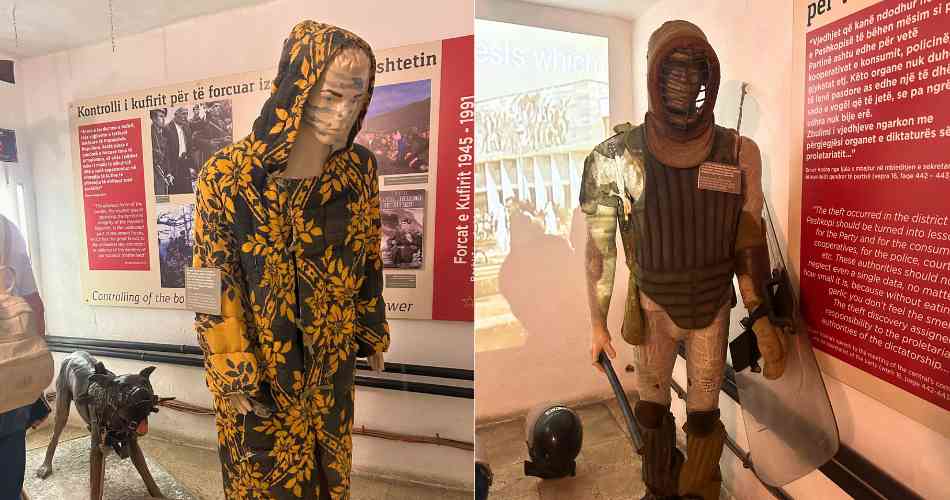
These bunkers were ordered by the dictator I mentioned before, Hoxha, and built by the Albanian people during the isolation period. The Bunk Art 2 museum houses memorabilia from that period so you can get a better understanding of just how dark those times were.
There is also another similar bunker museum, Bunk’Art 1, to check out near Dajti Mountain. If you combine going on the Dajti cable car and Bunk’Art 1, you can have an enjoyable day trip from Tirana.
PSsst Public transport is chaotic. It doesn't work well if you have a short amount of time in Albania so I'd highly recommend renting a car. Compare the best deals on Tirana car rentals.
Museums In Kruja
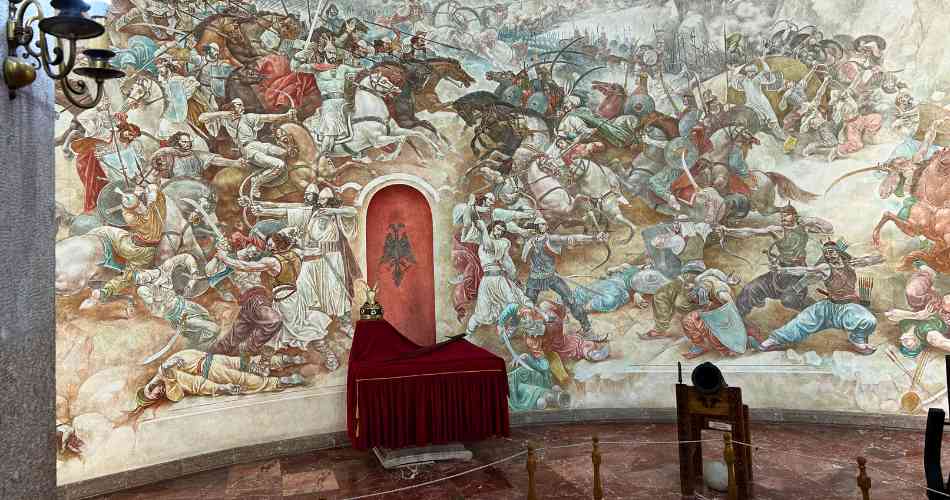
Kruja is a charming village nestled in the mountains of central Albania. It is known for its rich history and stunning views of the surrounding landscapes. The village is most famous for its association with Skanderbeg, Albania’s national hero.
One of the main attractions in Kruja is the Skanderbeg Museum, located within the ancient Kruja Castle. Another must visit is the Ethnographic Museum which showcases traditional Albanian life with its impressive collection of artifacts and exhibits.
4. Gjergj Kastrioti National Museum (Skanderbeg Museum)
The Skanderbeg Museum is a captivating tribute to the national hero of Albania, Gjergj Kastrioti Skanderbeg.One of the most interesting things to do in Kruja – this museum stands as a symbol of the country’s rich historical legacy.
It pays homage to Skanderbeg’s remarkable achievements as a military leader and an icon of Albanian resistance against the Ottoman Empire. As you enter the Skanderbeg Museum, you are greeted with a massive statue of Albania’s legendary figure.

The museum houses a remarkable collection of artifacts, weapons, armor, and historical documents that shed light on Skanderbeg’s life and his pivotal role in shaping Albania’s history.There are exhibits that chronicle Skanderbeg’s military campaigns, strategic brilliance, and unwavering determination.
Detailed maps, paintings, and sculptures bring the era to life, allowing visitors to gain a deeper understanding of the challenges faced by Skanderbeg and his army. The Skanderbeg Museum itself was founded in 1982 and is housed within the Kruja Castle grounds.
The museum does have a castle-like appearance, similar to the historic towers of northern Albania, but it is not part of the original Kruja Castle ruins. There is no entrance fee for Kruja Castle, but there is a 500 Lek fee for the Skanderbeg Museum, and Albanians can enter for free.
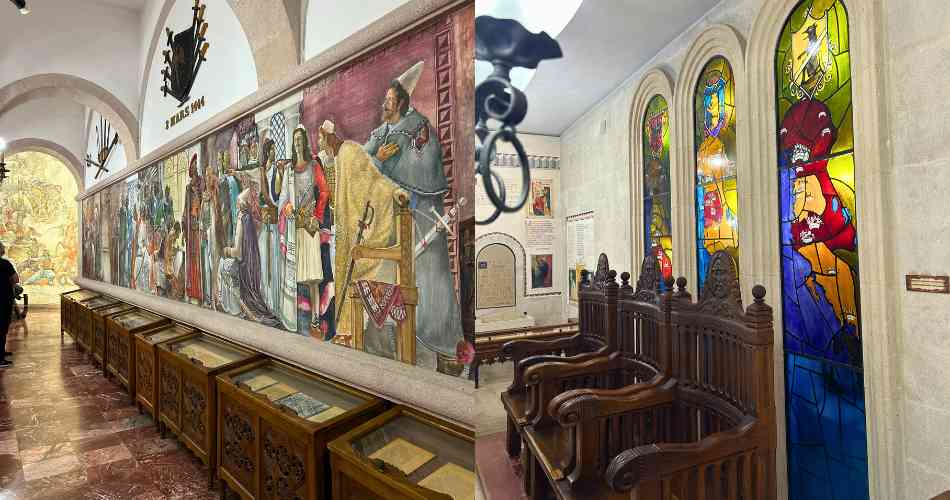
5. Ethnographic Museum of Krujë
The Ethnographic Museum offers visitors a fascinating glimpse into the traditional way of life in the region. Housed in a well-preserved Ottoman-style house, the museum showcases a rich collection of artifacts and exhibits that depict Albanian customs and traditions.
The carefully restored rooms are adorned with authentic furniture, household items, and tools, providing an authentic setting that reflects the lifestyle of Albanian families from the 18th and 19th centuries.
Demonstrating the creativity and talent of Albanian artisans, you can see things like traditional costumes and jewelry.
There are also intricately woven rugs, vibrant embroidery, and exquisite woodwork showcased within the traditional house. The entrance fee into the Ethnographic Museum is 400 Lek.
Best Museums In Shkoder

Shkoder, one of the oldest cities in Albania, is known for its vibrant culture and historical significance. The city is home to several notable museums, including the Site of Witness and Memory, which details the horrors of the communist regime.
The Museum of Rozafa Castle offers insights into the region’s ancient history and stunning views from the castle’s vantage point. Photography enthusiasts will appreciate the Marubi National Museum of Photography, housing an extensive collection of historical photographs.
The History Museum of Shkodër provides a comprehensive look at the city’s past, showcasing artifacts from various periods of its history.
Looking to upgrade your stay? Check out this review of the 10 best hotels in Shkoder ✔️
6. Marubi National Museum of Photography
Before visiting, I’d never been to a photography museum even though I like to consider myself an amateur photographer.
So this was a unique experience for me, and it gave me a lot more insight into how deep Albania’s history is, especially Shkoder. The photos show social, cultural, and political life in Albania from 1850 to the present. It’s one thing to learn about what happened, but images open up your mind to understand in a completely different way.
“An image is worth 1,000 words.” – Frederick R. Barnard
Even if you don’t usually consider yourself a museum person, since it’s visual, you might enjoy it. It can be a somber experience since Albania’s past is filled with hardships, but it’s definitely an interesting thing to do in Shkoder while visiting.
Entrance to the Marubi National Museum of Photography is:
- 700 lek for adults
- 600 lek for groups over 12
- 350 for orphans, seniors, and people with disabilities
- 210 lek for students and pupils aged 12-18
- Free for children under 12, war veterans, former political prisoners, paraplegic and tetraplegic individuals
7. History Museum of Shkoder
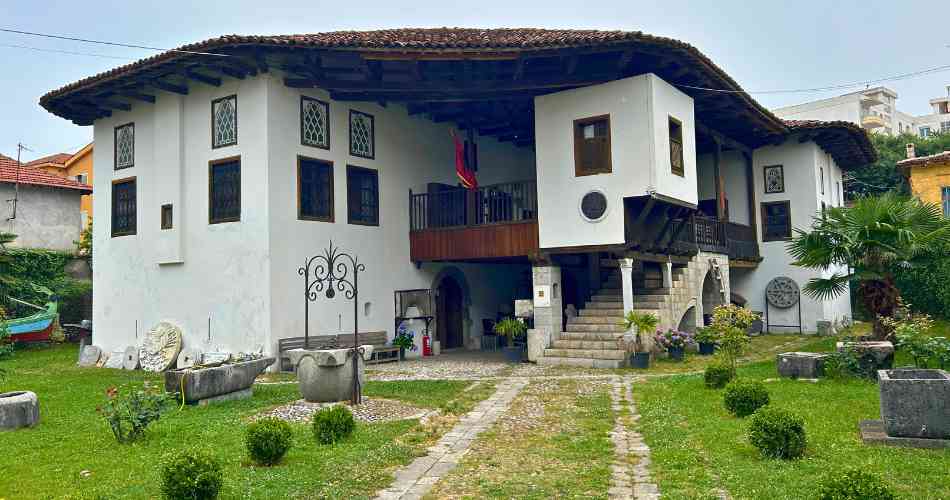
The Shkoder History Museum was established in 1947 with donations from religious communities (the Jesuits and Franciscans) and some prominent families of Shkoder. It was moved to its current residence in 1996, to the traditional Shkodran house of Osa Kuka.
While visiting you’ll get to take a step back in time to the Albanian Renaissance with the beautiful artwork that is displayed. There are also ethnographic and archaeological displays. Entrance to the museum is 150 lek for adults.
Looking for something interesting in Shkoder city center? Check out this epic traditional food tour in Shkoder!
7. Site of Witness and Memory (Communist Crimes Museum)
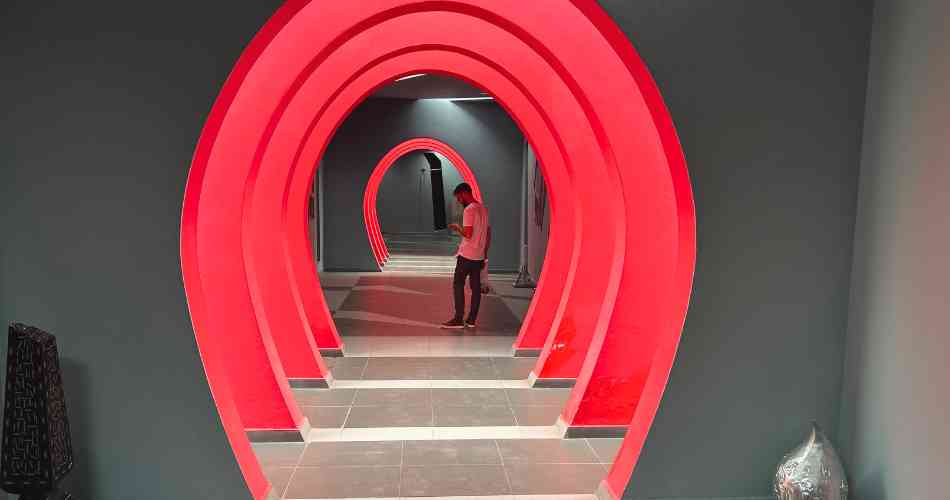
The Site of Witness and Memory in Shkoder, Albania, serves as a poignant reminder of the country’s tumultuous communist past. Located in a former prison, the museum documents the brutal repression, imprisonment, and persecution faced by many Albanians during the communist era.
Through photographs, personal stories, and artifacts, visitors gain a profound understanding of the impact of the regime on individuals and families.It shows the resilience and courage of those who endured these hardships, making sure that their stories are not forgotten.
A lot of the museums is printed-out text on the walls, which can be overwhelming to read it all. For this reason, if you are limited on time, I’d recommend visiting Marubi and the History Museum first as they are a bit more engaging.
9. Museum of Rozafa Castle
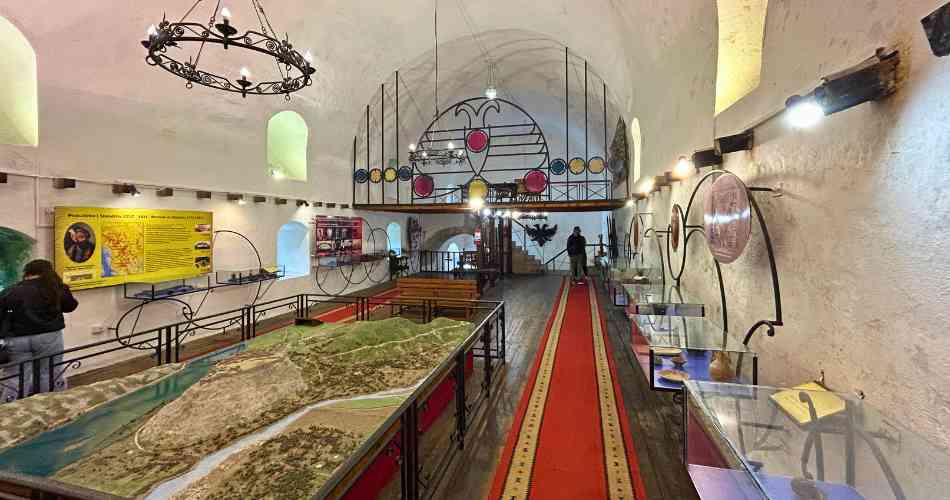
If you’re already planning to visit Rozafa Castle (it’s a must-see place in Shkoder), then you might as well visit the adjoining museum while you’re there. The Rozafa Castle Museum is located within the complex, so you can only visit if you pay the entrance ticket which is 400 lek.
The museum also has an entrance fee of 200 lek. The first few times I went I didn’t go in, but finally I did and I was pleasantly surprised. You get to see the only intact building in the complex from the inside. It is one of the most fortified buildings so the walls are very thick.
Some interesting artifacts show just how old the fortress and the city of Shkoder is! There is evidence that dates back to the Bronze Age, which makes Shkoder one of the longest-inhabited cities in the region. If you’re sticking to a budget, it’s not super necessary to visit. The History Museum of Shkoder will do fine and has more to see.
10. Gjirokaster Museums
- Ethnographic Museum of Gjirokastër
- Zekate House
- Skënduli House
- Ismail Kadare’s House
- Fico House
- Cold War Tunnel Museum
Gjirokaster, often called the “City of Stone,” is renowned for its well-preserved Ottoman architecture and historical charm. This UNESCO World Heritage site is nestled in the Drinos Valley and offers picturesque views of the surrounding mountains.
One of the highlights of Gjirokaster is its abundance of traditional houses, which reflect the city’s rich cultural heritage. The Ethnographic Museum, housed in an 18th-century Ottoman-style building, offers a glimpse into traditional life in the region.
The Zekate House, Skënduli House, Ismail Kadare’s House, and Fico House are other notable examples, each showcasing unique architectural features and historical significance.
Gjirokaster Castle, perched high on a hill, dominates the skyline and offers stunning panoramic views of the city and valley below. This imposing fortress has played a crucial role in the region’s defense over the centuries and now houses a museum and the annual Gjirokaster National Folklore Festival.
Beneath the castle, the Cold War Tunnel Museum provides a fascinating look into the communist era, with a network of underground bunkers and tunnels designed to protect government officials in the event of a nuclear attack.

Other Museums In Albania To Check Out
In these sections about the museums in Albania, I have highlighted specific areas or cities that have a hotspot of great museums: Tirana, Kruja, Shkoder, and Gjirokaster. It feels like every inch of Albania has a history that can be learned about, unfortunately, not everything has been preserved or documented.
This leads to only certain areas having good museums, but there are other museums in Albania that are incredible, but a little bit more out of the way. Here are some more Albania museums to check out:
11. National Museum of Medieval Art

The National Museum of Medieval Art in Korçë is a treasure trove of Albania’s medieval heritage. Established in 1980, the museum boasts an impressive collection of over 7,000 artworks, including icons, woodwork, metalwork, and textiles.
The highlight of the collection is its extensive array of religious icons, showcasing the rich tradition of Byzantine and post-Byzantine art in Albania. Even if you aren’t religious, the display is mesmerizing and was one of my favorite parts of visiting Korce.
The National Museum of Medieval Art is housed in a modern building that offers a serene atmosphere for visitors to appreciate the intricate craftsmanship and historical significance of the pieces. This museum in Albania serves as an important cultural institution not just for the country but for the whole region.
Many other museums in Albania focus on communism, so this one is quite unique since it preserves and promotes the artistic legacy of medieval Albania.

12. Archaeological Museum of Apolonia
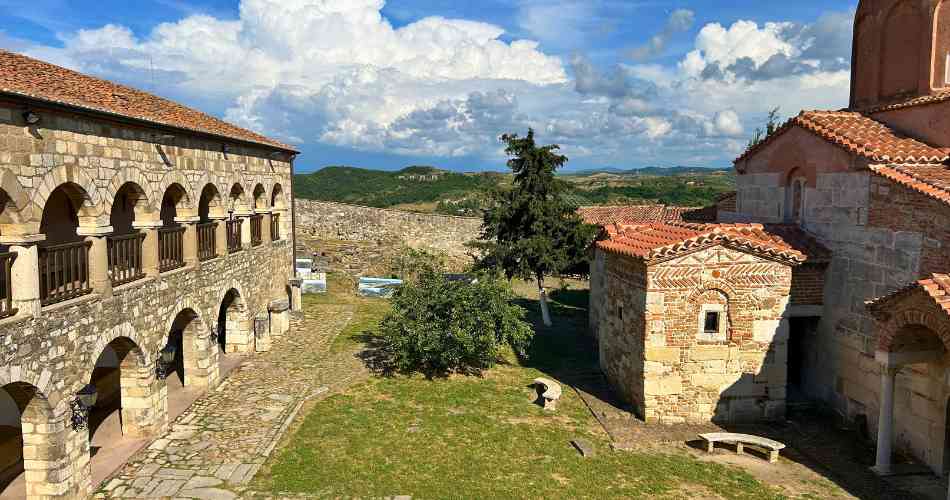
The Archaeological Museum of Apollonia, located within the ancient city of Apollonia near Fier, Albania, is definitely for history enthusiasts! Housed in a restored 14th-century monastery, the museum showcases a vast collection of artifacts that highlight the city’s significance as a major center of commerce and culture in antiquity.
Visitors can explore a range of exhibits, including statues, pottery, inscriptions, and coins that span several centuries of Apollonia’s history. The museum’s serene setting, surrounded by the ruins of the ancient city and lush landscapes, enhances the experience.
Again, this is quite a special museum in Albania because of the collection size and level of preservation. It offers a unique glimpse into Albania’s rich archaeological heritage that shouldn’t be missed!
13. Museum of National Independence
Vlorë, a coastal city in southwestern Albania, is known for its beautiful beaches, vibrant harbor, and a significant cultural landmark dedicated to the country’s struggle for independence.
The Museum of National Independence was established in the building where Albania’s independence was declared on November 28, 1912. This Vlore museum provides an immersive journey through the nation’s history.
Exhibits include photographs, documents, personal belongings of key figures, and artifacts that chronicle the events leading up to and following the Declaration of Independence. This museum in Albania displays the country’s path to sovereignty and the resilience of its people in their quest for freedom.

Best Albania Museums – Final Thoughts
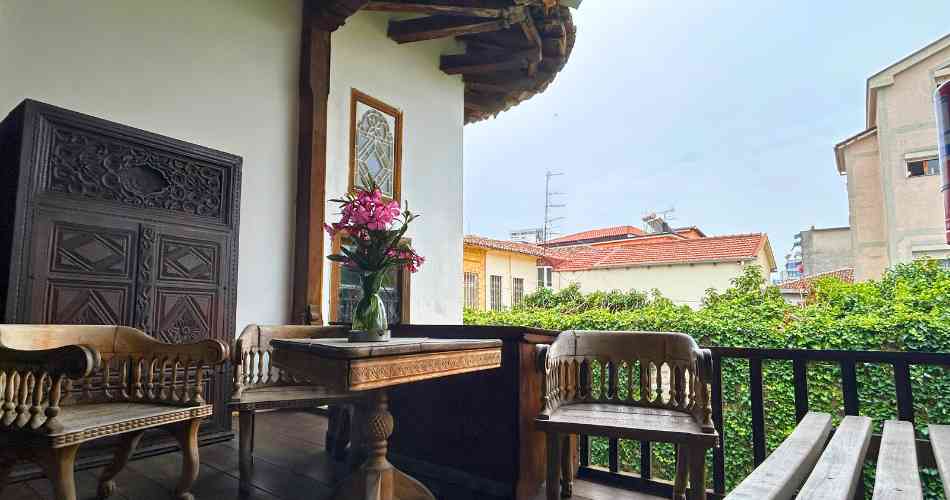
Visiting the best museums in Albania is a fantastic way to dive into the country’s fascinating past. Whether you’re in the buzzing capital of Tirana exploring the National History Museum and the Museum of Secret Surveillance, or wandering through the quaint village of Kruja with its Skanderbeg Museum, there’s so much to see.
Shkoder offers the History Museum of Shkoder and the unique Marubi National Museum of Photography, while Gjirokaster, the “City of Stone,” has stunning traditional houses and the intriguing Cold War Tunnel Museum.
Don’t miss the National Museum of Medieval Art in Korçë or the Archaeological Museum of Apollonia for a peek into medieval and ancient times.
Museums in Albania do an awesome job of showcasing the rich history and the incredible resilience of the Albanian people. Sure, some spots might not be as polished as other tourist destinations, but that’s part of the charm.
These Albania museums are great for those wanting to get a deeper understanding, whether you’re a history nerd or just curious. Trust me, you won’t want to miss these spots while traveling Albania.
My Trip Recommendations
- Rent a car in Tirana – It’s the best way to see Albania, especially if you’re short on time
- Compare hotels and apartment prices all in one place on Trivago – the most convenient way to get a good deal
- Prefer hostels? Find the best ones on Hostelworld – especially with the new Linkups
- Find discounted flight deals with Skyscanner if you’re flying to Albania
- Get a quote for affordable & flexible insurance travel insurance coverage
- Budget option – free accommodation through volunteering with Worldpackers – get $10 off
